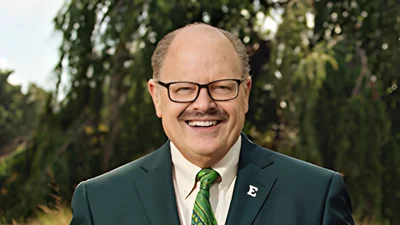Santa J. Ono, President, University of Michigan - Ann Arbor | University of Michigan - Ann Arbor
Santa J. Ono, President, University of Michigan - Ann Arbor | University of Michigan - Ann Arbor
Researchers from the University of Regensburg and the University of Michigan have discovered that a material known as chromium sulfide bromide could support magnetic switching, potentially benefiting quantum computing and sensing applications. This finding builds on previous studies that identified excitons, quantum entities sometimes confined to a single line within this material. The new research connects this phenomenon to the magnetic order in chromium sulfide bromide.
Chromium sulfide bromide is notable for its ability to support various ways of encoding information, including electric charge, photons, magnetism, and phonons. "The long-term vision is, you could potentially build quantum machines or devices that use these three or even all four of these properties," said Mackillo Kira, professor at U-M.
In the material's magnetized state at low temperatures (below 132 Kelvin), excitons are confined to single layers due to its antiferromagnetic structure. In contrast, above 132 Kelvin, when the material isn't magnetized, excitons extend over multiple layers. This confinement in a single atomic layer restricts excitons further to a single dimension, which aids in preserving quantum information by reducing collisions.
"The magnetic order is a new tuning knob for shaping excitons and their interactions," stated Rupert Huber from the University of Regensburg.
Huber's team produced excitons by using infrared light pulses on chromium sulfide bromide and found two variations with different energies—a phenomenon known as fine structure. They also explored spatial variations by probing inner structures with less energetic pulses along different axes. These findings suggest configurations can be adjusted based on magnetic states influenced by external fields or temperature changes.
"Switching between a magnetized and a nonmagnetized state could serve as an extremely fast way to convert photon and spin-based quantum information," noted Matthias Florian from U-M.
Theoretical work led by Kira used quantum many-body calculations to predict large fine-structure splitting in the magnetically ordered material. The study aims to explore if excitons can be converted into magnetic excitations embodied in electron spins.
This research was supported by various institutions including the German Research Foundation and National Science Foundation. Contributors also included researchers from Prague's University of Chemistry and Technology and Dresden University of Technology.






 Alerts Sign-up
Alerts Sign-up